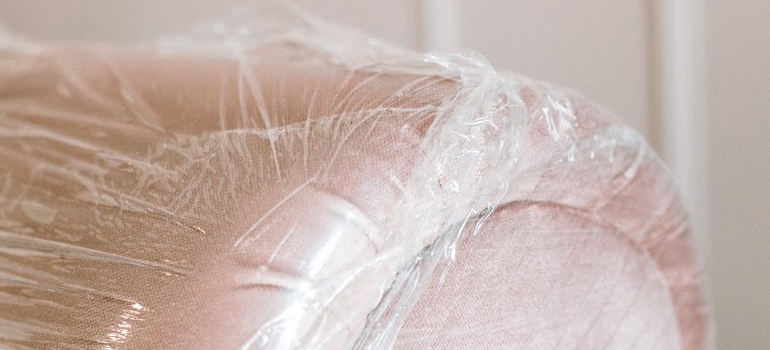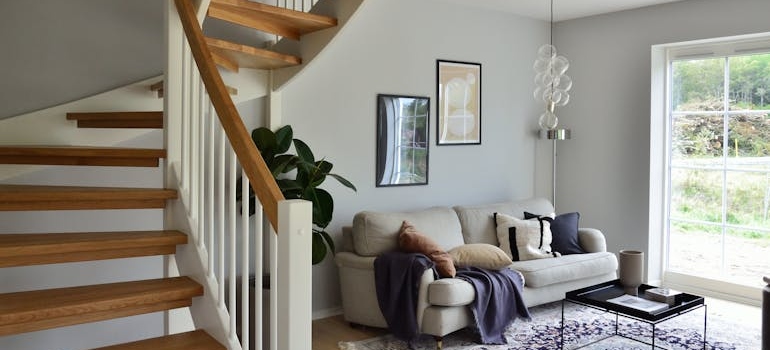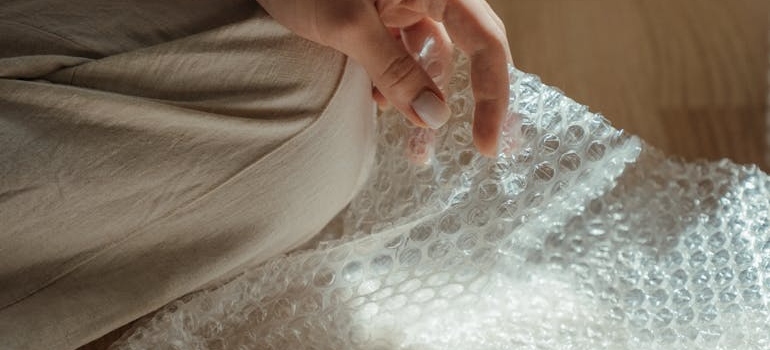Tips for Moving Without Damaging Your Home
When you’re planning a move, keeping your home in pristine condition can feel like an impossible task. With large furniture, heavy boxes, and tight spaces, the potential for damage is high. But with the right strategies of the best moving companies Boise has and some forethought, you can make sure your move is smooth and avoid leaving behind dents, scratches, and scuffs. If you live in Boise, Idaho, this guide on moving without damaging your home will help you complete the process while keeping your place and belongings intact.
Why Protecting Your Home Matters During a Move
Moving day can feel chaotic, and it’s easy to overlook the potential damage that can occur during the process. Scratches on floors, dents in door frames, and scuffed walls are common mishaps when moving heavy or awkward items. In a city like Boise, where many homes feature unique layouts—like split-level homes and staircases—the risk of property damage is higher. Failing to protect your home can lead to costly repairs, unnecessary stress, and potentially even safety hazards.
Fortunately, taking a few extra precautions can make all the difference. Here are some tips to ensure your home stays in top condition during the move:
- Plan ahead by identifying areas most prone to damage, such as narrow hallways and staircases.
- Use moving blankets to protect furniture and walls from scratches.
- Disassemble large furniture to make navigation through doorways easier.
- Lay down floor protection like runners or cardboard to shield floors from dirt and scuff marks.
- Install corner guards on walls and doorways to prevent dents.
- Employ furniture sliders to avoid scratching hardwood or tile floors.
- Wrap fragile items carefully in bubble wrap and moving blankets.
- Prepare for weather conditions with floor mats and towels to avoid water or mud damage.
- Hire professionals in moving services Boise ID trusts for handling bulky or delicate items safely.
- Enlist help from friends or family to manage heavy lifting and navigate tight spaces.
Although the risks may seem high, with thoughtful preparation, your home can remain as pristine as before the relocation. You’ll settle into your new place with ease and peace of mind!

1. Plan Ahead for a Damage-Free Move
The first step in ensuring a smooth, damage-free move is planning well in advance. Moving is stressful enough without last-minute surprises, so take the time to walk through your home and assess which areas are most vulnerable. In older homes, you may find narrow doorways or hallways, while newer homes with hardwood floors and freshly painted walls need extra care to avoid scuffing or scratching.
In Boise, many homes have unique architectural features that could pose challenges during a move. For instance, split-level homes are common in the area, and moving large items up and down stairs can be tricky. Identify these potential trouble spots early, and make a plan for how you’ll tackle them on moving day.
Moving in Boise also means dealing with the region’s weather, which can vary greatly depending on the season. If you’re moving during the winter months, icy conditions can complicate your plans. Slipping while carrying heavy furniture could not only cause personal injury, but could also damage floors, walls, or even the furniture itself. Keep this in mind, and plan accordingly by checking weather forecasts and taking preventive steps like putting down floor covers.
2. Protect Your Floors: A Key Step for Boise Homes
Boise’s weather can be unpredictable, with dry summers, wet springs, and snowy winters. Each season presents its own challenges when it comes to protecting your floors. One common concern for homeowners is tracking in dirt, mud, or moisture during the move. This can leave lasting damage, particularly on hardwood or carpeted floors.
To avoid this, lay down protective materials such as large canvas drop cloths or plastic sheets along high-traffic routes in your home. You can also use cardboard as an inexpensive option that provides a buffer between your floors and heavy furniture. For hardwood floors, furniture sliders are a must—they allow you to move heavy objects without leaving deep gouges.
One key tip for Boise residents is to be especially mindful of moisture, especially in the winter when snow or ice may be tracked inside. Placing mats or towels near doorways will help prevent water from seeping into your floors. If you’re dealing with snow on moving day, consider having a few towels on hand to quickly clean up any melting snow or mud.
3. Large Furniture Moving Without Damaging Your Home
Moving large furniture is one of the riskiest parts of the process. Big items like sofas, beds, and bookshelves are awkward to maneuver and can easily cause damage to walls, doorways, and floors if not handled properly.

Before you start moving, take the time to disassemble furniture when possible. This is especially important for bulky or oversized items. In many cases, furniture is easier to handle when broken down into smaller parts. Removing table legs, bed frames, or cabinet doors can help you navigate tight spaces more easily. Not only does this reduce the risk of damage to your home, but it also protects the furniture itself.
For homes in Boise, where many residences have a combination of tight doorways and staircases, careful disassembly with furniture installation services can be a game-changer. Also, a quick internet search or consultation with your furniture’s manual will often give you the steps needed to disassemble it safely. Be sure to label each part and place screws or hardware in clearly marked bags so that you can easily reassemble them later.
4. Stairways: High-Risk Areas to Protect
Homes with staircases pose an extra level of difficulty for moving without damaging your home. Narrow or steep stairways can make it tough to maneuver, especially when carrying large or heavy items. This can result in chipped walls, damaged railings, and even accidents.
In Boise, where split-level homes and multi-story houses are common, many homeowners find that their staircases become focal points of concern during a move. To protect both the walls and the stairs themselves, it’s a good idea to wrap banisters and handrails in moving blankets or padding. If you’re handling the move yourself, take special care to lift items properly to avoid dragging them on stairs, which can lead to damage.
Another useful tip is to use a dolly or hand truck for heavy items. While this may seem like a time-saver, always ensure the dolly is appropriate for stair use. Some hand trucks have specific attachments or wheels that make navigating stairs easier and less risky. For tricky areas, consider hiring professional heavy equipment movers with experience in handling large, heavy items—they can often manage these challenges more easily.
5. Hire Professional Movers to Reduce Risk
While moving yourself can save money, hiring professional movers with experience can drastically reduce the risk of damage to your home. Many Boise residents find that the cost of professional movers is worth the peace of mind that comes with knowing your home and belongings will be protected.
Professional movers have the right equipment and techniques to safely move heavy, bulky, or fragile items without causing damage. They’re trained to handle everything from navigating tight spaces to protecting fragile objects. Boise has several reputable moving companies that specialize in both local and long-distance moves, making it easier to find a service that fits your needs.

When choosing a mover, look for local movers in Boise with experience handling moves in the area. They’ll be more familiar with the specific challenges of homes in the locale. Additionally, check reviews to ensure they have a track record of safely transporting goods without damaging homes.
6. Make Use of Corner Guards and Wall Protectors
Corners and walls are often the first places to suffer damage during a move. To prevent scrapes, dents, and chips, it’s a good idea to invest in corner guards. These simple plastic or rubber protectors fit over the edges of your walls and doorways, creating a buffer between the walls and any furniture being moved.
While corner guards are an easy solution for protecting high-risk areas, they’re also reusable and can be stored for future moves. For those renting in Boise, these inexpensive tools can save you from costly repair bills when moving out. Wall protectors are another great option. These are padded covers or adhesive films designed to stick directly to the wall and prevent scratches or dents from furniture. If you’re moving a lot of large furniture through tight spaces, wall protectors can be a real lifesaver!
7. Enlist Friends and Family for Support
If you’re tackling the move on your own, it’s essential to have help. Enlist friends or family to lend a hand, particularly with the heavier or more awkward items. Having extra sets of hands reduces the likelihood of dropping or dragging items, which can lead to damage.
When moving large items, having spotters to guide and help you navigate tight spaces is invaluable. For places with narrow hallways, staircases, or low ceilings, this extra help results in moving without damaging your home. In Boise, where homes can vary greatly in layout, extra hands will help ensure that your move goes smoothly and that your home stays intact.
8. Prepare for Boise’s Unique Weather Conditions
Boise’s climate plays a big role in how you plan your move. Whether it’s the hot, dry summer or the potential for snow and rain in the colder months, weather can complicate the moving process. Be sure to prepare for whatever the forecast holds. In the summer, heat can cause you to rush, increasing the risk of damage. Stay hydrated and take regular breaks to avoid making careless mistakes. In winter, take care to lay down protective mats and floor covers at all entry points to prevent snow, ice, or rain from damaging your flooring.
Additionally, if you’re moving to Idaho during Boise’s colder months, plan for the possibility of slippery outdoor conditions. Ice on walkways or driveways can not only pose a hazard to you but can also increase the risk of dropping heavy items. Salt or sand your driveway and walkways to provide a better grip during the move.

9. Take Care of Fragile Items
While much of the focus is often on protecting floors and walls, don’t forget about your fragile items. Glass, mirrors, and delicate decor can easily break if not properly packed and handled. Invest in bubble wrap, foam, and sturdy boxes to ensure your items stay safe.
For larger fragile items like mirrors or framed artwork, wrap them carefully in bubble wrap and moving blankets, and transport them separately from other furniture. Boise’s hilly terrain and occasional rough roads can make for a bumpy ride, so securing these items properly in the moving truck is key to avoiding breakage.
Final Preparations: Moving Without Damage in Boise
Moving is a significant life event, and it’s essential to safeguard both your belongings and your home throughout the process. From planning the route for heavy furniture to considering local weather conditions, a little extra attention goes a long way.
If you’re steering Boise’s steep driveways, tight doorways, or tricky staircases, focus on key protective measures such as disassembling furniture, using sliders, and securing stair railings. And don’t forget to protect your floors, walls, and corners with reliable materials like moving blankets, corner guards, and runners.
Should the job feel overwhelming, Boise offers many experienced local moving companies that can help carry the load—literally. A professional team with knowledge of Idaho’s terrain and housing layouts can be a valuable resource, especially for large or complicated moves.
Moving without damaging your home is possible with the right approach, and these practical tips ensure your home remains as pristine as possible. Stay prepared, enlist support when necessary, and approach each step of the process methodically. Your home, whether it’s your current one or your new Boise destination, will thank you for the extra care.

